Related Research Articles

Delaware is a state in the Mid-Atlantic region of the United States, bordering Maryland to its south and west; Pennsylvania to its north; and New Jersey and the Atlantic Ocean to its east. The state takes its name from the nearby Delaware River, in turn named after Thomas West, 3rd Baron De La Warr, an English nobleman and Virginia's first colonial governor.

Camden is a town in Kent County, Delaware, United States. It is part of the Dover, Delaware Metropolitan Statistical Area. The population was 3,464 at the 2010 census.

Wyoming is a town in Kent County, Delaware, United States. It was named after the Wyoming Valley in Pennsylvania. It is part of the Dover, Delaware, Metropolitan Statistical Area. The population was 1,313 at the 2010 census.

Elsmere is a town in New Castle County, Delaware, United States, bordering the city of Wilmington along Wilmington's western border. According to the 2010 Census, the population of the town is 6,131.
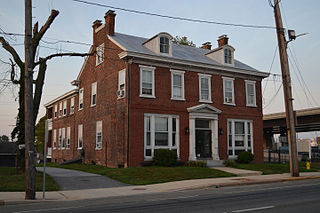
Newport is a town in New Castle County, Delaware, United States. It is on the Christina River. It is best known for being the home of colonial inventor Oliver Evans. The population was 1,055 at the 2010 census. Four limited access highways, I-95, I-295, I-495, and Delaware Route 141 intersect within one mile (1.6 km) of the town.
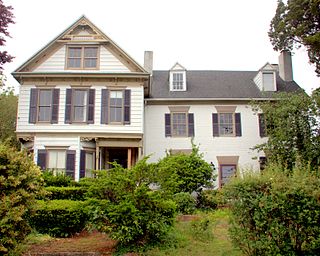
Laurel is a town in Sussex County, Delaware. The population was 3,708 at the time of the 2010 census. Laurel is part of the Salisbury, Maryland-Delaware Metropolitan Statistical Area. It once hosted the Laurel Blue Hens of the Eastern Shore Baseball League.
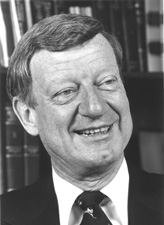
William Victor Roth Jr. was an American lawyer and politician from Wilmington, Delaware. He was a veteran of World War II and a member of the Republican Party. He served from 1967 to 1970 as the lone U.S. Representative from Delaware and from 1971 to 2001 as a U.S. Senator from Delaware. He is the most recent Republican to have served as a U.S. Senator from Delaware.
Outerbridge Horsey III was an American lawyer and politician from Wilmington, Delaware. He was a member of the Federalist Party, who served in the Delaware General Assembly, as Attorney General of Delaware (1806–1810) and as United States Senator from Delaware (1810–1821).
The Eastern Shore Baseball League was a class D minor league baseball league that operated on the Delmarva Peninsula for parts of three different decades. The league's first season was in 1922 and the last was in 1949, although the years were not consecutive, and featured teams from Maryland, Delaware, and Virginia. The first incarnation lasted from 1922 to mid-1928, the second from 1937–41, and the third from 1946–49. Though the level of play was competitive and many future major leaguers gained experience in the ESBL, funding the league remained a constant problem for the rural franchises.
Robert Pyle Robinson was an American banker and politician from Wilmington, in New Castle County, Delaware. He was a member of the Republican Party who served as Governor of Delaware.
William Franklin "Lovebird" Allen was an American businessman and politician. He was a Democratic member of the Delaware General Assembly and the United States House of Representatives.
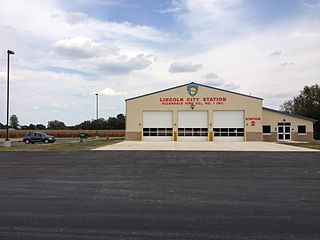
Lincoln is a small unincorporated community in northern Sussex County, Delaware, United States. It is part of the Salisbury, Maryland-Delaware Metropolitan Statistical Area. The planner that originally laid out the town planned for it to become the county seat. Lincoln lies on U.S. Route 113 between Ellendale and Milford. The town was never incorporated, but streets were laid out and several businesses and residences came, surrounding the current Delmarva Central Railroad line. Lincoln was formerly the headquarters of the Delaware Coast Line Railroad.

Roxana is an unincorporated community and former municipality, from 1909 to 1921, in southeastern Sussex County, Delaware. It is roughly centered on the intersection of Delaware Route 20 and Delaware Route 17. It is part of the Salisbury, Maryland-Delaware Metropolitan Statistical Area.

U.S. Route 13 (US 13) is a U.S. highway running from Fayetteville, North Carolina north to Morrisville, Pennsylvania. In the U.S. state of Delaware, the route runs for 103.33 mi (166.29 km). It traverses the entire north–south length of the state from the Maryland state line in Delmar, Sussex County north to the Pennsylvania state line in Claymont, New Castle County. US 13 connects many important cities and towns in Delaware, including Seaford, Dover, and Wilmington. The entire length of US 13 in Delaware is a multilane divided highway with the exceptions of the segment through Wilmington and parts of Philadelphia Pike in Claymont. Between the Maryland border and Dover, US 13 serves as one of the main north–south routes across the Delmarva Peninsula. From Dover north to Tybouts Corner, the route is followed by the controlled-access Delaware Route 1 (DE 1) toll road, which crosses the route several times and has multiple interchanges with it. US 13 bypasses downtown Wilmington to the east before it heads northeast of the city parallel to Interstate 495 (I-495) and the Delaware River to Claymont. US 13 is the longest numbered highway in the state of Delaware.

Ward is an unincorporated community in Sussex County, Delaware, United States. in the Little Creek Hundred.
Same-sex marriage has been legally recognized in Delaware since July 1, 2013. Governor Jack Markell signed legislation on May 7, 2013, just hours after its passage in the Delaware House of Representatives and Senate. Though Rhode Island enacted legislation legalizing same-sex marriage before Delaware, on July 1, Delaware became the eleventh state, and twelfth US jurisdiction, to allow same-sex couples to marry, preceding Minnesota and Rhode Island by one month.

A statue of Caesar Rodney is installed in Wilmington, Delaware, United States. The statue was erected in Rodney Square in downtown Wilmington on July 4, 1923. It was designed by New York sculptor James Edward Kelly. The Gorham Company in Rhode Island cast the statue and its two bronze plaques. The memorial was removed in June 2020. Its current location, preservation status, and plans for future display are currently unclear, and its removal has generated controversy.
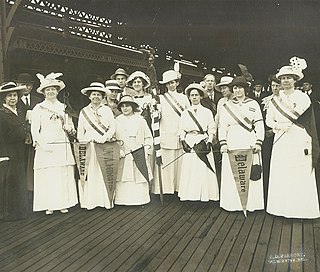
Women's suffrage in Delaware began in the late 1860s, with efforts from suffragist, Mary Ann Sorden Stuart, and an 1869 women's rights convention held in Wilmington, Delaware. Stuart, along with prominent national suffragists lobbied the Delaware General Assembly to amend the state constitution in favor of women's suffrage. Several suffrage groups were formed early on, but the Delaware Equal Suffrage Association (DESA) formed in 1896, would become one of the major state suffrage clubs. Suffragists held conventions, continued to lobby the government and grow their movement. In 1913, a chapter of the Congressional Union (CU), which would later be known at the National Women's Party (NWP), was set up by Mabel Vernon in Delaware. NWP advocated more militant tactics to agitate for women's suffrage. These included picketing and setting watchfires. The Silent Sentinels protested in Washington, D.C. and were arrested for "blocking traffic." Sixteen women from Delaware, including Annie Arniel and Florence Bayard Hilles, were among those who were arrested. During World War I, both African-American and white suffragists in Delaware aided the war effort. During the ratification process for the Nineteenth Amendment, Delaware was in the position to become the final state needed to complete ratification. A huge effort went into persuading the General Assembly to support the amendment. Suffragists and anti-suffragists alike campaigned in Dover, Delaware for their cause. However, Delaware did not ratify the Nineteenth Amendment until March 6, 1923, well after it was already part of the United States Constitution.

This is a timeline of women's suffrage in Delaware. Suffragists in Delaware began to fight for women's suffrage in the late 1860s. Mary Ann Sorden Stuart and national suffragists lobbied the Delaware General Assembly for women's suffrage. In 1896, the Delaware Equal Suffrage Association (DESA) was formed. Annual state suffrage conventions were held. There were also numerous attempts to pass an equal suffrage amendment to the Delaware State Constitution, but none were successful. In 1913, a state chapter of the Congressional Union (CU) was opened by Mabel Vernon. Delaware suffragists are involved in more militant tactics, including taking part of the Silent Sentinels. On March, 22, 1920, Delaware had a special session of the General Assembly to consider ratification of the Nineteenth Amendment. It was not ratified by Delaware until 1923.
Susie Estella Palmer Hamilton (1862-1942) was a suffragist and activist in Wilmington, Delaware, and a founding member of the Equal Suffrage Study Club.
References
- ↑ "Incorporate North Laurel". The Evening Journal(Wilmington, Delaware). January 29, 1915.
- ↑ Story, Chas. (1915). Laws of the State of Delaware passed at a Special Session of the Ninety-fourth General Assembly commenced and held at Dover on Monday, September 28th, A.D. 1914 and in the Year of the Independence of the United States the One Hundred and Thirty-ninth. Wilmington, Del.
- ↑ "Busy Sessions in the House". The Morning News(Wilmington, Delaware). February 27, 1915.
- ↑ "To Incorporate North Laurel". The News Journal(Wilmington, Delaware). March 5, 1915.
- ↑ "Laurel Commissioners Elect". The Morning News(Wilmington, Delaware). April 16, 1915.
- ↑ ftp://ftp.census.gov/library/publications/decennial/1920/bulletins/demographics/population-de-number-of-inhabitants.pdf
- ↑ "Census of Population and Housing". Census.gov. Retrieved June 4, 2016.
- ↑ "Would Extend Laurel Limits". The Evening Journal(Wilmington, Delaware). March 12, 1927.
- ↑ "Board Quits; Town Refuses To Unite". The Evening Journal(Wilmington, Delaware). April 8, 1927.
- ↑ "Laurel To Extend Limits". The Morning News(Wilmington, Delaware). March 2, 1929.
- ↑ "North Laurel Votes In Favor Of Combine". The News Journal(Wilmington, Delaware). March 30, 1929.
- ↑ "Pastor Heads Laurel Rotary". The Evening Journal(Wilmington, Delaware). April 3, 1929.
